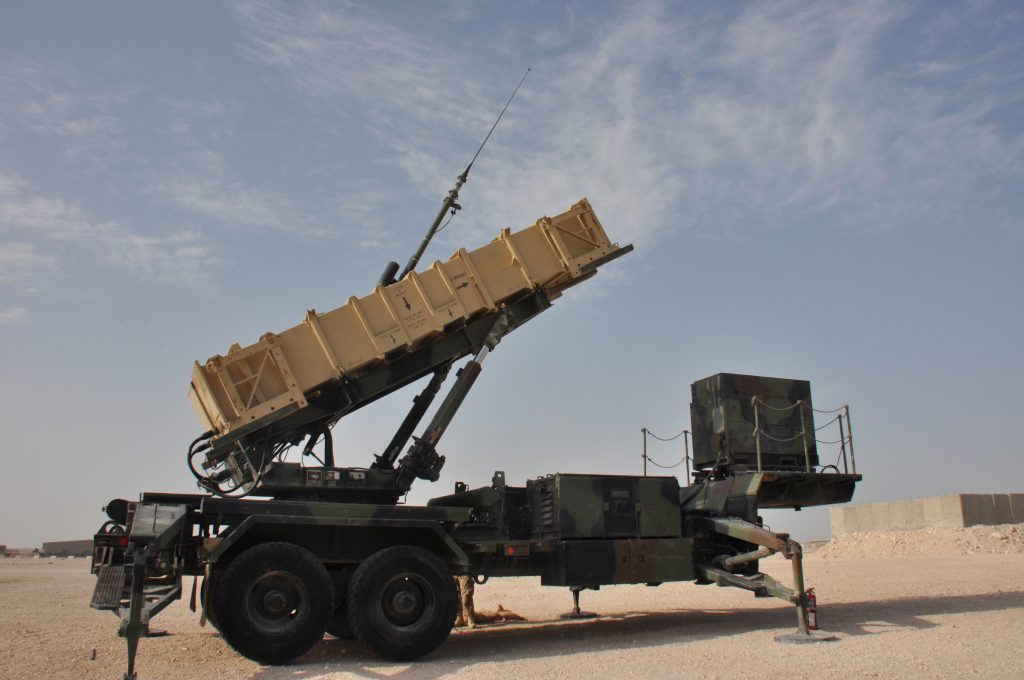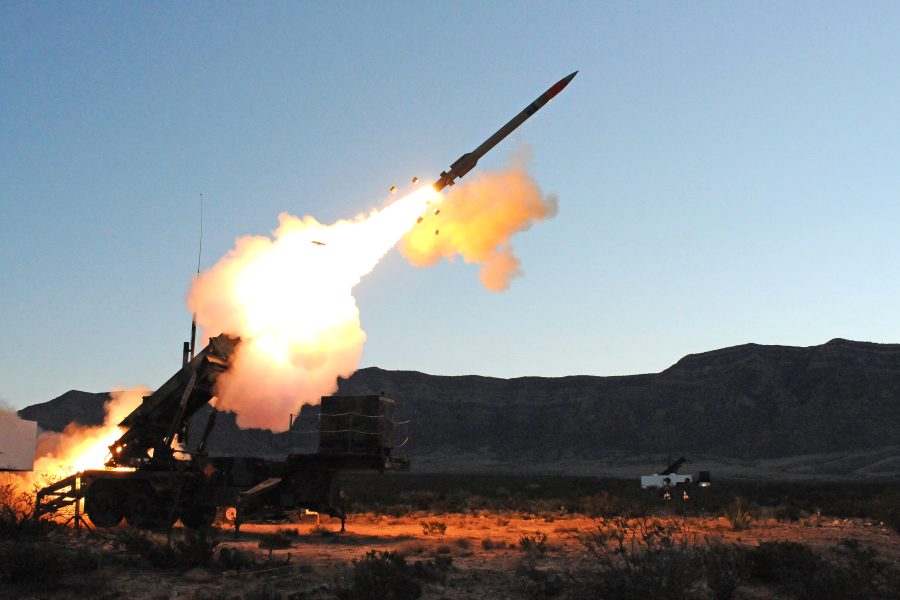The U.S. Air Force’s plan to operate from an expanded network of bases around the Pacific is facing a familiar but fundamental challenge: how to protect those locations from a Chinese missile attack.
Service leaders have wholeheartedly embraced the concept of Agile Combat Employment that calls for more operating locations, even those that are austere or remote. The idea is to make it more difficult for China to target American airpower in a potential fight, as the Air Force moves its planes from base to base.
But since China boasts a growing arsenal of ballistic and cruise missiles that could put many airfields within its reach, shifting aircraft from base to base is only part of the solution. The service also needs a way to protect its fleet and its Airmen on the ground.
“I would feel more confident if we had a more robust, active base defense, quite frankly,” Air Force Chief of Staff Gen. David W. Allvin told reporters recently. “That’s one of those where we’ve been working with the Army, and that’s something that the Department has taken on as a joint requirement that we need to improve our base defenses.”
Officially, defending bases against missile attacks is an Army mission. Army Patriot batteries protect Air Force installations in the Middle East, such as Al Udeid Air Base, Qatar, and Al Asad Air Base, Iraq. However, those systems are costly, and the Army has only a limited number of them. The Army is also experimenting with directed energy short-range laser air defenses in the Middle East, but that has yet to produce a sure-fire defense.
In the Middle East, where Iranian-supplied missiles are a primary threat, American air bases have not yet come under a barrage that has crippled manned aircraft. The approximately 180 attacks that Iran-backed militias have carried out with a variety of missiles, one-way attack drones, and rockets in Iraq, Syria, and Jordan have been directed against U.S. troops.
But the threat is real; a few years ago, under the leadership of former U.S. Center Command boss Gen. Kenneth F. McKenzie, the U.S. built an alternate Combined Air Operations Center at Shaw Air Force Base, S.C., so the Air Force would not be wholly reliant on its CAOC command and control hub at Al Udeid should it become the target of a large salvo of Iranian missiles.

“The capacity and accuracy of adversary long-range strikes have altered combat paradigms and threaten to drive U.S. combat aircraft to rear-area bases that are at less risk of attack but too distant from the operational battlespace to enable combat-relevant operations,” J. Michael Dahm of the Mitchell Institute for Aerospace Studies wrote in a recent report. “The current capabilities and capacities of both active and passive air defenses are inadequate to sufficiently protect U.S. air bases and other critical facilities on adversary target lists, especially in the Indo-Pacific.”
The Air Force and Army say they are working to solve the problem jointly—an effort that is led by the No. 2 officer and civilian on the Air Force side, Vice Chief of Staff Gen. James C. “Jim” Slife and Undersecretary of the Air Force Melissa Dalton.
Those Air Force officials “are working on this real-time with the Department of the Army,” Dalton told Air & Space Forces Magazine at an event at the Brookings Institution in late July. “That is an Army mission.”
While the need for the capability is clear, ensuring that the Air Force and Army efforts are properly resourced and synchronized is key.
“What the Department is endeavoring to do together is to ensure that we are able to project power forward in these types of contested environments,” Dalton said. “And so it is going to require us rowing forward together and defining the specific requirements and timing and sequencing of how we’re going to pull those pieces together.”
But there are fresh challenges on the horizon, too. New threats such as drone swarms have appeared, along with the low-cost rocket and drone attacks Iran and Iranian-aligned groups have used.
In Europe, the array of Russian drones, ground-launched missiles, and stand-off air-launched missiles has been a focus of Gen. James B. Hecker, the commander of U.S. Air Forces in Europe, who has a team working on the problem.
“We will never have enough base defense assets that I can protect every single base 24/7 here,” Hecker told Air & Space Forces Magazine recently. “It only works to move the assets inside of their targeting cycle. We’ve got to make sure that we move them quite often. And then, you know, with everything coming in, something’s going to get through eventually. So you have to make sure you have an adequate rapid runway repair model so that you can repair airfields when you do have a leaker that gets through. And then you have to do some passive things, as well: decoys and those kinds of things used to keep them off balance.”
Allvin also underscored the importance of improving base defense.
“If we can’t have them [everywhere], we want to have them be able to decide where to place them, which means they need to be mobile enough to be able to not just be fixed,” Allvin said of advanced missile defense systems. “That’s some of the cleverness that has to happen with this, as well as the ability to rapidly move.”
The ultimate goal is to make it harder for the enemy to attack a target, real or simulated.
“Old-school things of camouflage, concealment, and deception are still alive and well; we just need to upgrade them to a 21st-century context,” Allvin said. “So the idea [is] still being able to make it a targeting calculus problem for the adversary, where they don’t know if that’s a real thing or if it’s a fake thing. ‘Should I spend a missile on it? Should I spend five missiles on it?'”
“There’s been dialogue and an understanding between the Army and the Air Force and [the Office of the Secretary of Defense] that we will work together,” Allvin said. “The Army is sorting out how to do it for air bases. They also have their own for their maneuver elements as well. But they are pursuing some things specifically, some areas specifically, with us to support Agile Combat Employment.”
